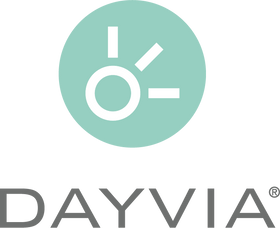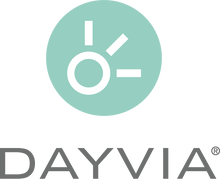Everything you need to know about light therapy
Everything you need to know about light therapy
Light therapy and its benefits
When to use a light therapy lamp?
What are the effects of light therapy on our brain?
How to properly use a light therapy lamp?
#dayvialuminotherapie

Light therapy , as its name suggests, is treatment with light. This technique aims to effectively treat circadian cycle disorders, in other words “treating yourself with light”. This alternative medicine consists of exposing the body to as much light as possible via lamps specially designed to provide light at an optimal wavelength.
Light therapy is part of the large family of phototherapies, not to be confused with other treatments such as: chromotherapy (or chromatotherapy) which will use colored lights to treat specific pathologies, of the body or face but mainly skin, or again heliotherapy, which will use natural sunlight.

There light therapy lies in the repeated exposure of the eyes to an artificial white light source, called “broad spectrum” reproducing sunlight. The main difference with sunlight is the absence of any harmful rays (X-ray, UV or IR).
This natural, non-drug method is the optimal choice for the treatment of seasonal depression, sleeping troubles or even non-seasonal or postpartum depression.
Note that light plays a fundamental role in the regulation of our biological clock and in the secretion of the hormones involved.
Numerous international studies show that light therapy helps to regain energy, fitness, ability to concentrate and good mood like that felt when you sunbathe in summer.
What is the principle of light therapy?

There light therapy is based on the effect of exposure to light on receptors located in the retina. Indeed, it was discovered in 2002 that there were photoreceptors on the retina, melanopsin ganglion cells. These cells are involved in the “non-visual functions” of the eye and are activated by light, but are not involved in vision.
These cells are therefore sensitive to specific light close to that of the sun and the intensity of the sensitivity will depend on:
- Light intensity
- Exposure duration
- Exposure time
- The wavelength of light (color)
- The bright history
That said, melanopsin ganglion cells exhibit optimal sensitivity to light with wavelengths between 475 to 500 nanometers.
In the morning, when light enters the eye, it activates the photoreceptors, these are connected to the structures of the brain and then transform the visual signal into an electrical signal which is sent, in turn, via the optic nerve to the regulator of our biological clock (the suprachiasmatic nucleus). This will then interpret the signal and order, via the pineal gland, the cessation of the secretion of melatonin (the sleep hormone) and trigger the production of serotonin and cortisol (hormones of wakefulness, happiness and anti-stress energy).


Each evening, with the decrease in light intensity, the mechanism reverses.
Why use a light therapy lamp?
Each evening, with the decrease in light intensity, the mechanism reverses. Melatonin is produced in our brain when the secretion of serotonin and cortisol is stopped.
The optimal functioning of this cycle, called the circadian cycle.
It is essential to ensure excellent psychological and emotional balance.
- More irritability and anxiety
- A gloomy mood
- A lack of energy
- Sleep problems
- Chronic fatigue, etc.
These are the main manifestations of the winter blues.
If these symptoms appear for 2 to 3 consecutive years, then it is seasonal depression .

Research shows that in people suffering from Seasonal depression , the secretion mechanism of melatonin (sleep hormone) is often disrupted. We then observe in these people a particularly high level of melatonin during the day, which explains the fatigue felt during the day.
In the morning, light therapy stimulation of retinal ganglion cells (non-imaging photoreceptors) helps block the transformation of serotonin into melatonin during the day.
These light therapy sessions will also allow a “reprogramming” of the biological clock so that melatonin will be naturally and normally secreted in the evening, when the light decreases, to promote the falling asleep phase.
What are the benefits of light therapy?

Exposing your body daily to artificial white light would have
numerous beneficial effects on the body.
Mood, energy, morale, healing or immunity, the benefits of light have been recognized for many years. It plays a key role in the proper functioning of the body's biological functions.
This is why an additional supply of light using light therapy lamps or glasses during periods of low light is often recommended.
Dayvia positions itself as the French specialist in light therapy and offers a range of products with medical approval which ensures its users an optimal level of effectiveness and safety.
Seasonal depression is a common pathology, long underestimated and therefore often underdiagnosed. This is how Dr Eric Charles, a psychiatrist in Limoges, believes that the majority of people who suffer from it are at best treated for a depressive episode without taking into account this seasonal nature or at worst that they go through autumn and winter. winter dragging out their pain and suffering without the slightest medical or psychological care.

In 2015, he published a book entitled “To Each His Own Rhythm” (Editions First), in which he presents a study carried out among general practitioners in Limoges and its surrounding area. They found that around one in seven people who visited their GP over the winter, for whatever reason, had seasonal affective disorder.
In France, each year, more than 500,000 people could present this type of seasonal disorder.
Most of the time, the seasonal depression is treated with antidepressants, but these are not necessarily the most effective.
- Mood disorders
- Non-seasonal depression
- Bipolar depression
- Postpartum depression
- Neurodegenerative pathologies such as Alzheimer's or Parkinson's
Light therapy has regularly been cited as one of the best non-drug therapies for insomnia disorders.
But be careful, the choice of lamp is essential for obtaining convincing results. Dayvia products have CE medical approval, they are regularly tested and approved by independent authorities.
1. Seasonal depression

Light therapy has regularly been cited as one of the best non-drug therapies for insomnia disorders.
But be careful, the choice of lamp is essential for obtaining convincing results.
Dayvia products have CE medical approval.
2. Sleep/wake rhythm disorder

Regular use of a light therapy lamp helps reset the internal clock of a patient who has phase shifts or insomnia.

Conversely, if the patient is in a late phase: he falls asleep late and wakes up late. A morning light therapy session will delay his sleep phase and he will fall asleep earlier in the evening.
For patients suffering from “Poor sleep”: a morning light therapy session will improve their sleep while avoiding the side effects of sleeping pills (morning drowsiness, reduced memory and decapitation of phases III and IV of sleep (recovery phases), decreased libido, risks of addiction and dependence).

There light therapy has regularly been cited as one of the best non-drug therapies for insomnia disorders.
But be careful, the choice of lamp is essential for obtaining convincing results. Dayvia products have CE medical approval. Compliance with these strict regulations ensures that the user receives an effective and safe product. And what's more, they are made in France
3. Disorders caused by working shifts
(Night work)

As exposure to light is our primary synchronizer, lack of light has a real impact on the overall functioning of our internal clock. Without light, no synchronization and therefore no energy.
Light therapy will therefore help to “set” the body to daytime mode, by boosting the secretion of good hormones and aligning the internal clock with life schedules.
4. Jet lag or jet lag

During a trans-meridian journey of more than 3 time zones, the biological clock is projected in less than 24 hours onto a new, completely different schedule of light and darkness. Although quite flexible, the circadian clock does not have the capacity to adapt so suddenly, and we quickly feel an internal disorder setting in: the famous symptoms of jet lag.
Dissipated after a few days, these symptoms can become very disabling for people who travel very regularly.
To compensate for the difference in the day-night schedule between the place of departure and the place of arrival, light therapy will act like an artificial sun, which allows the internal clock to gradually shift over a few days.
5. Mood disorders

The effects of light on mood were already described in Antiquity and in the first medical descriptions. Around forty years ago, neuroscience led to a renewed interest in light therapy. The first observations noted that the modification of biological rhythms could have an antidepressant effect and that light modified these rhythms.
Very quickly, clinical confirmation of the antidepressant effects of light therapy was confirmed, particularly in the treatment of seasonal depression and then unipolar depression. Neuroscience has subsequently also made it possible to better clarify the real effects of light and the phototransduction pathways involved in mood regulation. These studies validated the fact that there was an action on mood via the effect of light on circadian rhythms .
4. Postpartum depression

There postpartum depression is a mood disorder that affects approximately 10 to 15% of women after childbirth. Prompt diagnosis and treatment of symptoms is crucial for the well-being of the mother and infant. A majority of women reject treatment with drug therapy, especially during the breastfeeding period, because they are concerned about the possible effects of the drugs on the developing infant. The use of light therapy can then represent an adapted and non-pharmacological treatment.
5. Neurodegenerative pathologies (Alzheimer’s, Parkinson’s)

There Alzheimer's disease is mainly characterized by a phase of dementia.
In medical terminology, the state of dementia translates into a progressive alteration of cognitive faculties and loss of memory, a tangible element of the deterioration of the abilities of individuals suffering from Alzheimer's.
According to certain studies, light therapy could reduce the load of amyloid-β protein in the brain, partly responsible for the cellular degeneration characteristic of Alzheimer's disease.
In the specific case of Alzheimer's disease, researchers note that carrying out light therapy treatments makes it possible to restore memory and cognitive abilities as well as improve the quality and duration of sleep.
The bright nature of living spaces would also have an influence on the levels of aggression and anxiety of patients with dementia.
For Parkinson's disease, light therapy mainly acts on non-motor symptoms such as insomnia, depression or fatigue.
Light therapy also provides an interesting action in the prevention of disease. Thanks to its action on the regulation of circadian rhythms and sleep disorders, light therapy would help reduce risk factors.
Recent studies have demonstrated a correlation between lack of sleep and increased risk of developing dementia. This is demonstrated by a study carried out by the French National Institute of Health and Medical Research (Inserm) and the University of Paris, in collaboration with University College London (UCL).
What are the effects of light therapy on our brain?

Under the effect of light, the connectivity of the brain, the way in which the different areas exchange with each other is modified. Light therapy establishes an optimal dialogue between the amygdala and the hypothalamus. The amygdala is involved in the modulation of emotions and the hypothalamus, located in the subcortical brain, is involved in the functioning of mood, motivation, sleep (remember that it is the seat of the clock biological), appetite, thermoregulation... Directly connected to the pituitary gland, which secretes a whole series of hormonal precursors (in particular the precursors of sexual hormones), the hypothalamus has an impact on all of our vital functions. The quality of light therefore directly influences the way our brain processes our emotions.
Who can practice light therapy?
Light therapy is safe and has few contraindications. It can be practiced without medical advice by any person wishing to treat a pathology among those described above, without distinction of age (excluding young children), sex or skin color.
For an effective session at home, the ideal is to use a CE medical device certified light therapy lamp or glasses for 30 minutes, preferably in the morning. For light therapy lamps to be placed or hung on the wall, the ideal distance between the light source and the eyes is 30cm.
Studies have shown that light therapy can be practiced safely, however, before starting your treatment, please consult your doctor if:
- You suffer or have suffered from depression
- You are hyper sensitive to light
- You suffer from an eye disease such as cataracts, glaucoma, etc.
- You suffer from mental disorders
- You are undergoing treatment with psychotropic or photo-sensitizing medications
If you experience any problems (e.g. headaches or eye fatigue) following the use of a light therapy device, please report this to your doctor.
For people with bipolar or manic-depressive disorders, light therapy should be used with caution due to the possible risk of triggering a manic episode. Prior medical monitoring is therefore recommended.
When to use light therapy?

Researchers and doctors agree on the fact that the light therapy session should preferably be carried out in the morning rather than in the evening unless there is a phase shift or staggered work.
For children and adolescents, the duration of exposure should be reduced to 15 - 20 minutes maximum.
Generally speaking, the first effects are observed from the first week of treatment but very often, 4 weeks are necessary to observe measurable biological changes.
On average, symptoms can be reduced by 50 to 80% depending on the patient. This is a rate comparable to anti-depressants but light therapy causes far fewer adverse effects and is much less expensive.
Treatment should begin in September or October and continue until spring. Particularly sensitive individuals may experience a return of symptoms only a few days after exposure stops. In this case, as soon as the sunny days arrive, it is recommended to reduce the duration of the sessions gradually.
How to position a light therapy lamp?

To practice the light therapy , it is essential to acquire a perfectly adapted medical device, namely a light therapy lamp or glasses with CE marking. The SlimStyle or White 072 light therapy lamp allows you to carry out your session in the morning at breakfast and for the whole family to enjoy.
For the treatment to be effective, the lamp must be positioned so that the light can reach the eyes. It is not really necessary to stare at the light source, it is enough that it remains in the visual field. However, the eyes must remain open during the session so that the rays can reach the retina and transmit the light impulse to the brain.



